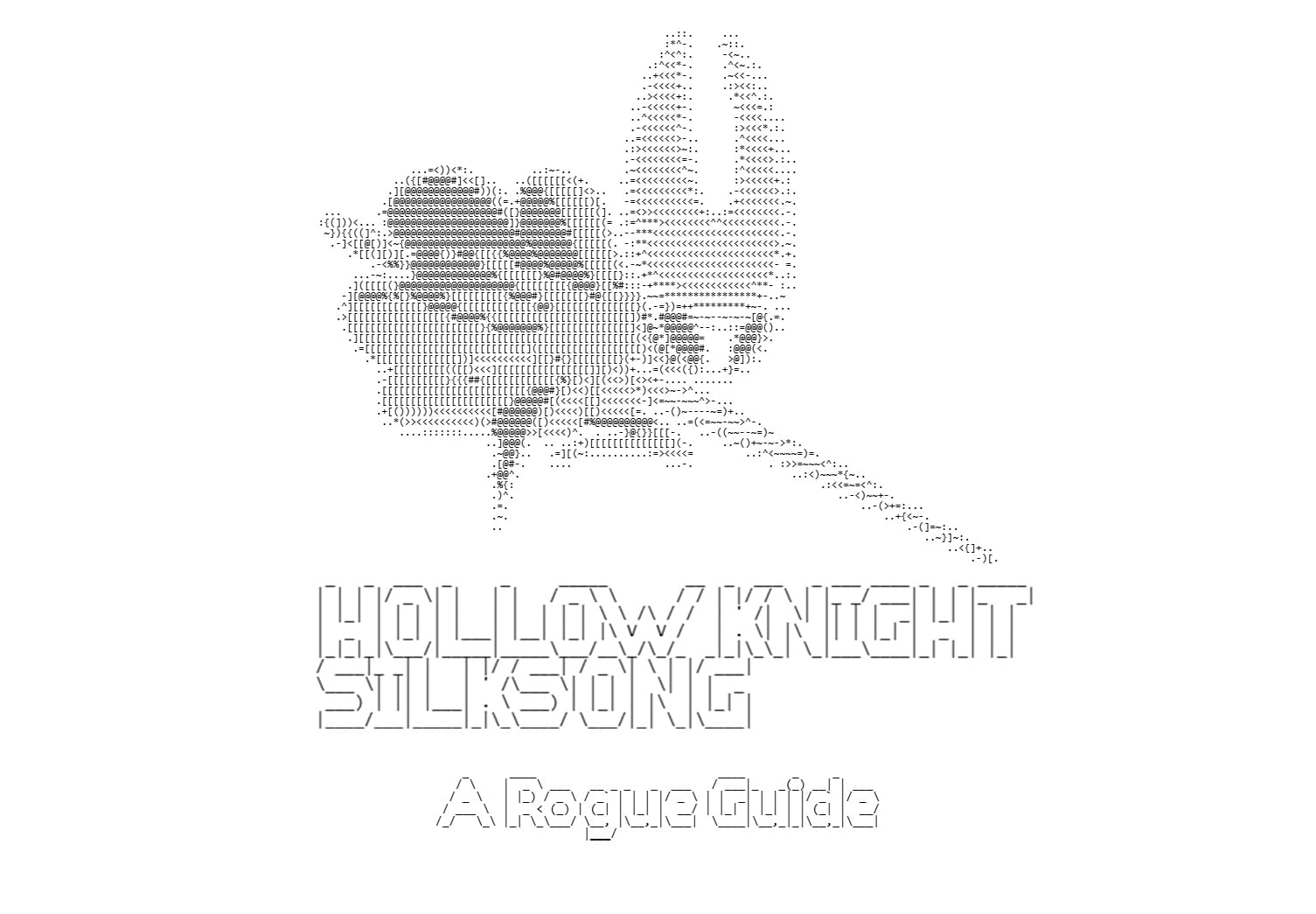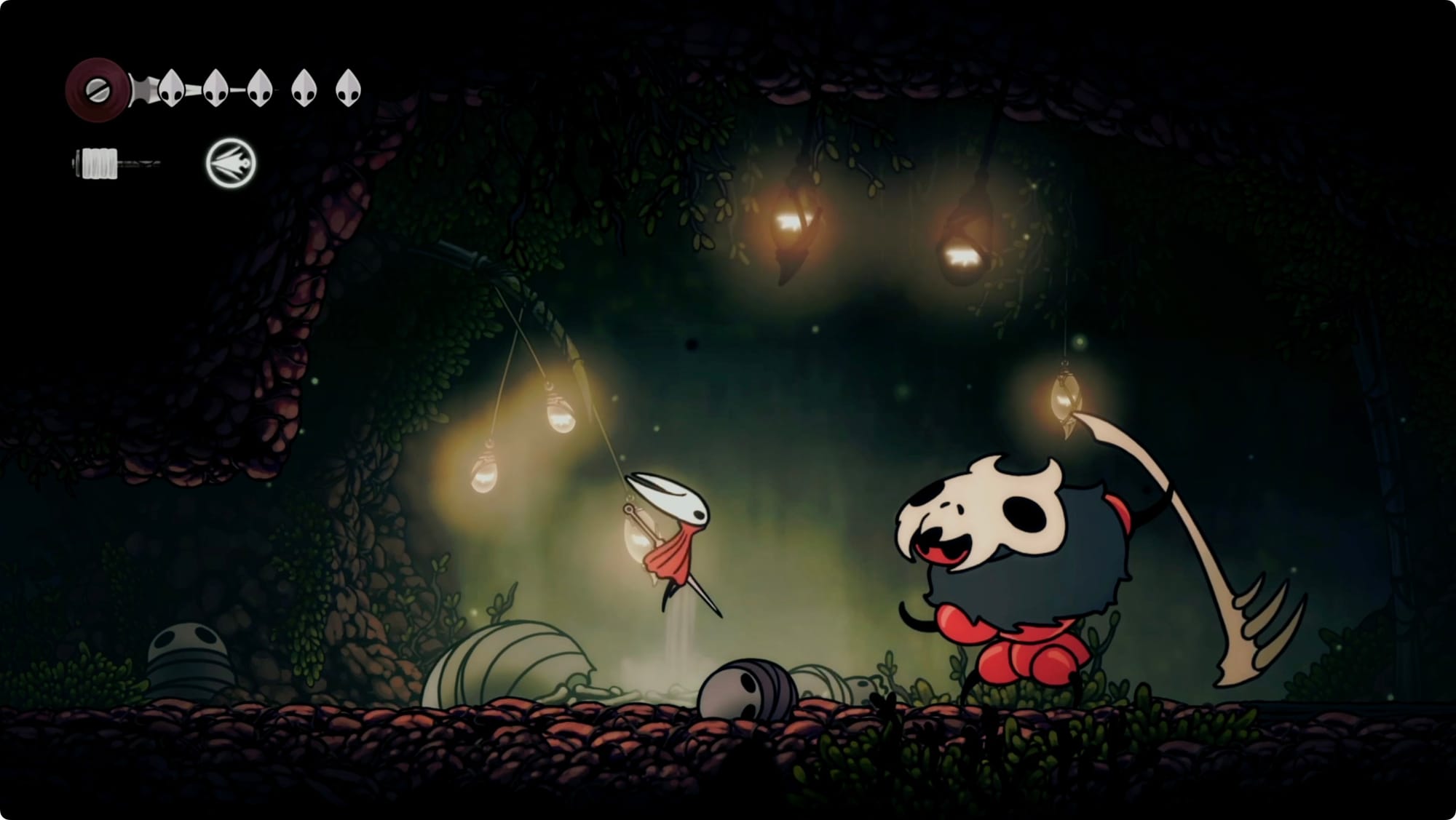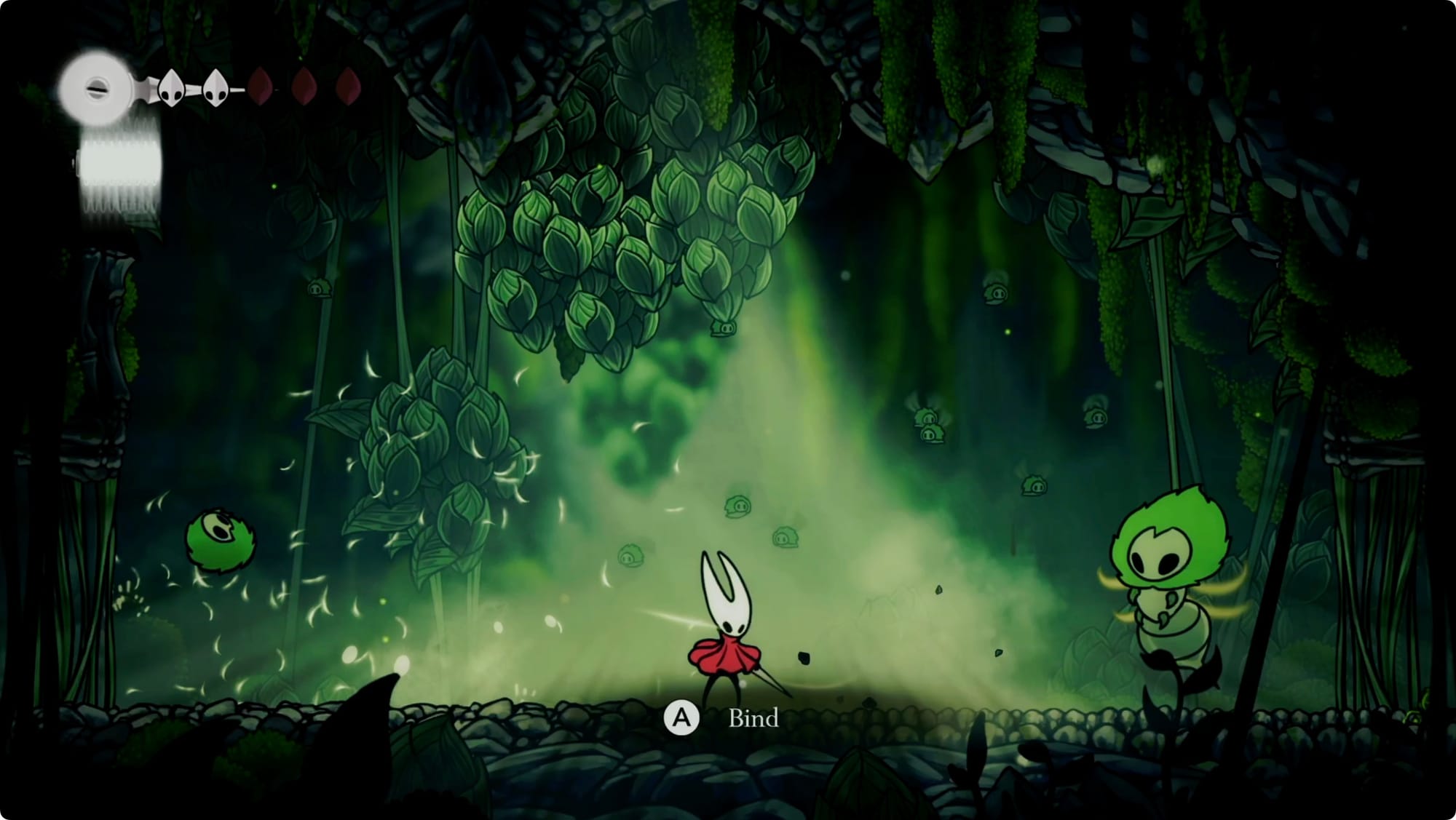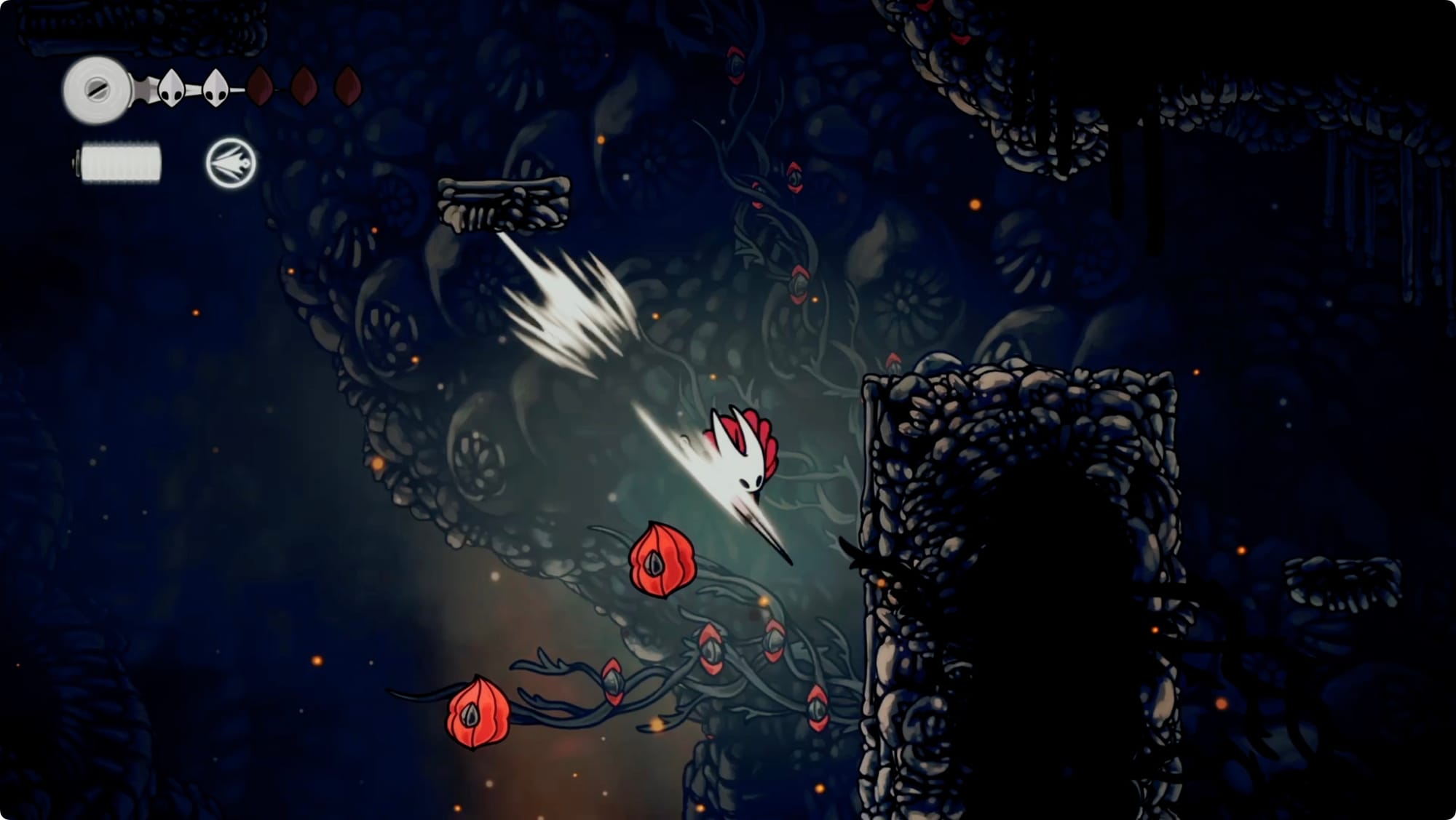Silksong is hateful and mean and you need to accept that
It’s not you. Silksong is hard. But we're here to help.

Hollow Knight was a hard game, but Silksong is taking that to a different level. (Complaints about how hard it is have even dropped it to “Very Good” on Steam). Whether you’ll hate the increased difficulty level or love rising to the challenge is something you’ll have to decide between you and your god. But before we get into the real tips here, I do think it’s important to accept something deep in your soul: Silksong hates you (in a good way … most of the time … maybe).

If you’ve ever played a FromSoft game, you’ll have a general idea of what I’m talking about here, but Silksong puts traps in places where they feel perfectly placed to deal maximum damage to you. It throws enemies at you with attacks that can chase you across the screen, even beyond where you can see the enemy that threw it. And, most importantly, almost all bosses deal two damage per hit. You start with five pips of health, and your first upgrade will give you a sixth pip of health, so that means you can’t take a third hit in most boss fights without healing or dying for a long time.
I haven’t shouted at a game to “fuck off” this much in years, and I’m having a real love/hate relationship with how I feel about it. I will say that I like the way it feels when I beat a boss, but I don’t like how much time I spend running from the checkpoint bench to the boss arena — one of my biggest pet peeves in hard games.
[Jeff: I played a bunch of Hollow Knight before starting Silksong and, honestly, I think Silksong is … friendlier. Maybe not easier, but it feels less exacting? I’m not as far as Ryan, so maybe this opinion will change. A couple hours in, I’m not struggling against the game as much as I was in Hollow Knight.]
[Ryan: It’s definitely friendlier to get into and explore from the beginning. And the learning curve isn’t as steep. But the way the game punishes you when you make a mistake and the spreading of the benches out from arenas is a lot more punishing than I remember. There are some solid quality of life improvements, mixed with some swift and early punches to the mouth. We should talk more after you fight Moorwing.]
All of that to say, before we get started here: it’s not you. The game is hard. It’s daring you to find the fun in a stack of needles. It wants you to look like Rocky, beat to shit, screaming for Talia Shire by the time the credits roll.
That boss you think you’re not supposed to fight yet? You probably are
It’s relatively common in hard games to pop into a boss arena by accident, get clapped, say to yourself “Well, I’m clearly not supposed to do this yet,” and then leave until you get stronger.

The thing about Silksong is that Hornet’s big upgrades come very slowly while you make your way through Act 1. The boss you dismissed as tomorrow’s problem is actually more of a today kinda problem. You can secret hunt a bit to look for more health or some other upgrades, but you’re going to have to face that stupid ant guy before you can continue toward the objective.
The good news is that most bosses' first impression makes them seem much harder than they actually are, because …
Hornet may be fast, but you need to play slower
Hollow Knight: Silksong’s combat rhythm is surprisingly slow. Bosses have big windups that are telegraphed. And while they hurt very badly if you fail to dodge, most bosses will only run completely over you if you panic and start moving too fast.
Because Hornet herself is fast and graceful — and we’re used to watching her move very quickly in the original Hollow Knight — I found myself getting out of sync with her a lot early, trying to make the more methodical combat work like a twitch reflexes game, and it just isn’t.
Just like in Hollow Knight, there’s a rhythm to the combat and knockbacks. Hornet has her own, and the game will reward you (with not dying) once you find that rhythm.
This might sound a bit cloying, but I genuinely recommend you take a deep breath before entering a boss arena. The combat moves slow and predictable enough (at least in Act 1) that you can even talk yourself through the fight out loud if you’re having trouble.
By the way, none of this is to say the bosses are easy and you’ll be able to smash them quickly using this method. I have still spent much longer than I’d like on several bosses. But I always make some steady progress when I’m taking things slow.
Sounds are important
Specifically, the grunts and growls that enemies make. Not only are moves telegraphed, but you’ll get major clues about what’s happening from the sounds baddies make just before attacking. There’s an early boss fight that kicked my ass until I realized that they growl right before an easily avoided attack that opens them up to damage. It only took one more try to beat it.
This advice holds true for some of the regular baddies, too. Keep an ear out (and an eye out) for any clue that makes the patterns simpler.
Healing is all or nothing

In Hollow Knight, you could heal one pip at a time as soon as you had enough Soul. In Silksong, you can only Bind to heal once you've filled the Silk meter. This heals up to three pips.
This means there's no incremental healing, so it's three pips or nothing.
Return to Bone Bottom early and often
You unlock fast travel very early in Silksong, once you get the first big ability and fight a boss blocking your way. While you don’t need to return to Bone Bottom — the first town you visit in Silksong — immediately, you should come back often to check the Wishwall (bounty board).

The bounty board offers a variety of side quests (wishes) to complete, most of which involve killing specific enemies and collecting items. Usually, you’ll just get Rosary Strings or other consumables by doing these, but every little bit helps, and it’s good to revisit these older areas with new abilities anyway.
The best part about returning to Bone Bottom is that you can summon Shakra — the delightful, singing wasp that draws your maps — by following his scattered discs on the right side of the town until you reach an elevated platform above. If you hit the stick with a disc attached to it, they’ll fly in and sell you some maps. This is a great way to get maps you might not have been able to afford the first time you ran into Shakra.
String your rosaries
Also in Bone Bottom, there’s a vendor with a general shop. They trade in the rosary beads you collect as you explore. Rosaries (like Geo in Hollow Knight) drop when you die. But if you have a Rosary String, it becomes an item in your inventory and doesn’t drop.
The vendor in Bone Bottom will string your rosaries for you at a cost (They charge you a fee of 20 beads for a string of 60, charging 80 in total). This keeps them safe if (when) you die, and you can break them apart from your inventory when you need them.
If you don’t like Hornet’s moves, there are (eventually) ways to fix that

Hornet’s attacks are quite different from those of the Knight or “Ghost” in Hollow Knight. She moves like she did in the original game, but the angled strike downward — which you need to use for platforming — has definitely caused some issues and frustrations with folks I’ve talked to about the game.
The cool thing is that Hornet can swap to different Crests you find throughout the game. These change her entire basic move set and give her a neat bonus that comes after you heal (like lifestealing off of attacks or generating additional Silk). Each of these crests changes the style and range of her basic attack, but, most importantly, it also changes her down slash, some of which aren’t angled at all.
Just don’t expect to see them for a while.
Double-tap the map button to open the full game map
Hollow Knight: Silksong continues the legacy of the first game by being pretty tough to navigate, especially before you have the map for an area. But even with the map, you’ll want to drop various pins to keep track of your location and what you’re currently working on.
Normally, you need to pop open the menu and move over to the map section in order to see all of the areas of the game together and dig into the pins. But you also have a map button on your controller or keyboard, which will cause Hornet to glance at the map quickly and then get back to the action. If you double-tap that button instead of holding it down, it’ll instantly take you to the menu version of the map instead.





